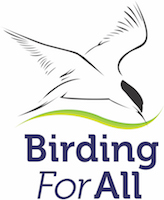This article first appeared in the April 2022 edition of Birdwatching Magazine
I keep a year list… I could say it’s citizen science, comparing each year to see how the planet is doing, and how the birds are faring in my area. Although there is some truth in that, in truth I’m a birder and I love variety. It’s great to see scarcer birds, especially as the Covid crisis has stopped me from any overseas birding. I confine my outings to my home county… although the year list sometimes gets an addition from visiting family or trips to look at disability access elsewhere. Most of the time, we bird within a fifteen-mile radius of home. I’m lucky to have some excellent reserves close enough not to feel too guilty about my car miles. I wish these old bones would allow me to cycle or trek, but my spinal curve would mean I’d be cycling whilst looking down at my front wheel, instead of at on-coming traffic… not recommended.
On the one hand, I struggle to see a bullfinch (fruit farmers can legally shoot them here!), or find a brambling and am more likely to see a black redstart than a ‘common’ one. All part of the joy of living with sea on three sides I guess. Luckily my locality has many birds that others find tricky, from Ring-necked parakeets to passage migrants and, especially, the seabirds. Almost anything can fly by… I’ve been within touching distance of a storm driven Pomerine skua, watched owls finishing their cross-channel trips and sometimes thrilled by literally hundreds of red-throated divers.
There are some great birds that like it around here, when they can avoid beach combers and canines, such as Purple Sandpipers. My ‘banker’ spots have been devoid for a couple of years. I don’t know if this is disturbance or climate, but something has changed. So, hearing they have been pitching up within my district at another spot, I’ve had a few goes at adding them to the year list, so far without success. They have made an odd choice of roost, the boat ramp on a very popular beach.
My outings haven’t been peopled with purple sands but there is always something of interest. Last time a fly-by long-tailed duck was my first in years and a close in diver and some returning fulmars entertained me. But, it was two much commoner species that sparked today’s piece, for similar reasons.
Turnstones, seem to be completely fearless, the last to leave the tideline when chased by dogs and happy to sit on railings a few feet from people. I’ve had them run through my legs in the Caribbean and pose at eye height on the sea wall. I’ve notice, over the last few years that rock pipits are getting bolder too. My local ones search for windswept titbits beneath the cliff walls in seaside carparks and, yesterday, one sat on a refuse bin allowing my approach to four feet. So tame that I thought it was poorly, until it flitted off to the strand for some morsel among the sodden seaweed.
It posed a question I’d love an answer for.
Sparrows and pigeons are universally intrepid, but other species can be too. I’ve had my fries nicked by American grackles and Asian mynas. I’ve had wild parrots land on my head and had my cream tea purloined by Australasian catbirds. Once I watched black redstarts at my feet hopping around under tables at a Serbian hotel, picking up the moths that had burnt out on arc lamps the night before.
What makes some species take advantage of the man made when others shy away?





